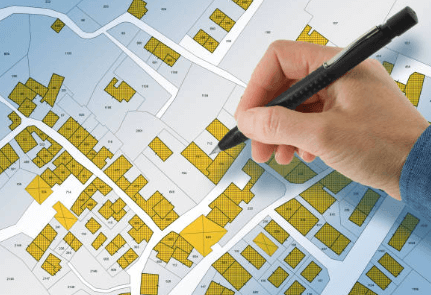Understanding zoning laws can be daunting for many, especially regarding variances. However, mastering zoning laws is crucial for property developers and homeowners looking to modify their properties. This blog aims to demystify the topic by delving into the nuances of “Variance in Zoning.” By providing a clear and comprehensive guide, we strive to help you navigate the complexities of zoning laws and understand how a variance in zoning could impact your projects and plans. Whether you seek to expand a home or develop a commercial property, this insight will equip you with the knowledge to approach local zoning boards confidently and clearly.
Real estate investors Steve Daria and Joleigh have successfully navigated zoning laws to maximize their property investments. Their experience underscores the importance of understanding variances in zoning and how they can influence project feasibility. By mastering these intricacies, they’ve approached local zoning boards and achieved their development goals confidently.
What is a Variance in Zoning?
A variance in zoning is a deviation from the set zoning requirements for a particular property.
It is a permission granted by the local zoning board to allow a property owner to use their land in a way that is not entirely in line with the zoning regulations.
Variances are typically sought when adhering strictly to the zoning laws would cause undue hardship or practical difficulties for the property owner.

Types of Variances
There are generally two types of variances:
Use Variance
A use variance is a zoning exception that permits a property owner to use their land for a purpose not typically allowed within the zoning district’s regulations.
This type of variance is sought when the property’s intended use does not conform to the zoning ordinance.
For instance, if a residential property owner wishes to operate a small business from their home in an area designated solely for residential purposes, they would need to apply for a use variance to allow commercial activities on the property.
Use variances are subject to rigorous review processes to ensure that any deviation from the zoning regulations is justifiable and does not negatively impact the surrounding area’s character or safety.
Area Variance
An area variance is a zoning exception that allows property owners to deviate from specific physical or dimensional requirements outlined in the zoning ordinance.
This variance permits setbacks, height restrictions, lot size, or building coverage adjustments.
For example, if a property owner wishes to have a building closer to the property line than the zoning regulations allow due to site constraints, they would seek an area variance to obtain approval for the deviation from setback requirements.
Area variances are granted based on criteria that show practical difficulties or unnecessary hardships in complying with the zoning regulations, and they aim to balance property owner rights with the community’s best interests.
Get An Offer Today, Sell In A Matter Of Days
Importance of Variances
Understanding the importance of variances in zoning is vital for anyone involved in real estate:
Flexibility
Variances offer flexibility by providing property owners options to accommodate unique situations where strict adherence to zoning laws would be impractical or unreasonable.
This flexibility allows property owners to adapt their plans to the specific characteristics of their land or the needs of their projects while still maintaining overall compliance with zoning regulations.
For example, a variance might permit the construction of a structure slightly closer to a property line than typically allowed, enabling the property owner to make optimal use of the available space without compromising safety or aesthetics.
Economic Benefits
Variances can benefit economically by enhancing a project’s viability and profitability.
By allowing deviations from zoning regulations, variances enable property owners to use their land more efficiently or to pursue more financially lucrative development opportunities.
For instance, a variance that permits increased building height may allow for additional floors in a commercial building, increasing its rentable space and potential revenue.
Community Development
Variances play a role in community development by fostering innovation and facilitating the use of space in ways that benefit the broader community.
By allowing for creative and innovative development proposals, variances can contribute to revitalizing neighborhoods, the creation of vibrant mixed-use districts, and the enhancement of public amenities.
For example, a variance that allows for converting an underutilized property into a community garden or a recreational space can improve residents’ quality of life and enhance the neighborhood’s attractiveness.
How to Obtain a Variance in Zoning
Acquiring a variance in zoning involves a series of steps that typically include:
Application
The first step in obtaining a variance in zoning is to apply to the local zoning board.
This application should include:
- A detailed description of the proposed project.
- Architectural plans or site plans.
- Justification for the variance: Explain why it is necessary and how it will not impact the surrounding area badly.

Public Hearing
Once the application is forwarded, a public hearing is scheduled. During the hearing:
- The applicant presents their case for the variance.
- Community members and stakeholders are allowed to voice their support or concerns.
- The zoning board may ask questions or request additional information.
Decision
After the public hearing, the zoning board will deliberate and decide.
They will consider factors such as:
- The hardship or practical difficulties presented by the current zoning laws.
- The potential impact on the surrounding community.
- Consistency with the overall zoning plan and community objectives.
Strategies for Success
Securing a variance in zoning can be challenging, but following these strategies can improve your chances:
- Thorough Preparation: Ensure your application is comprehensive and well-documented. Anticipate potential objections and prepare responses.
- Community Engagement: Interact with the community early in the process. Address their concerns and demonstrate how your project will benefit the area.
- Professional Assistance: Consider hiring an experienced zoning attorney or consultant to guide you.
Conclusion
Understanding and effectively navigating the concept of variance in zoning is essential for anyone involved in real estate development, city planning, or property investment. By comprehending the types of variances, following the steps to obtain one, and employing effective strategies, you can unlock your property’s potential and contribute to innovative community development.
**NOTICE: Please note that the content presented in this post is intended solely for informational and educational purposes. It should not be construed as legal or financial advice or relied upon as a replacement for consultation with a qualified attorney or CPA. For specific guidance on legal or financial matters, readers are encouraged to seek professional assistance from an attorney, CPA, or other appropriate professional regarding the subject matter.

